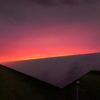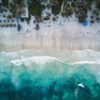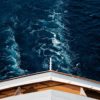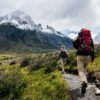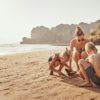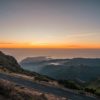Discover Incredible Alaskan Islands with Find Islands
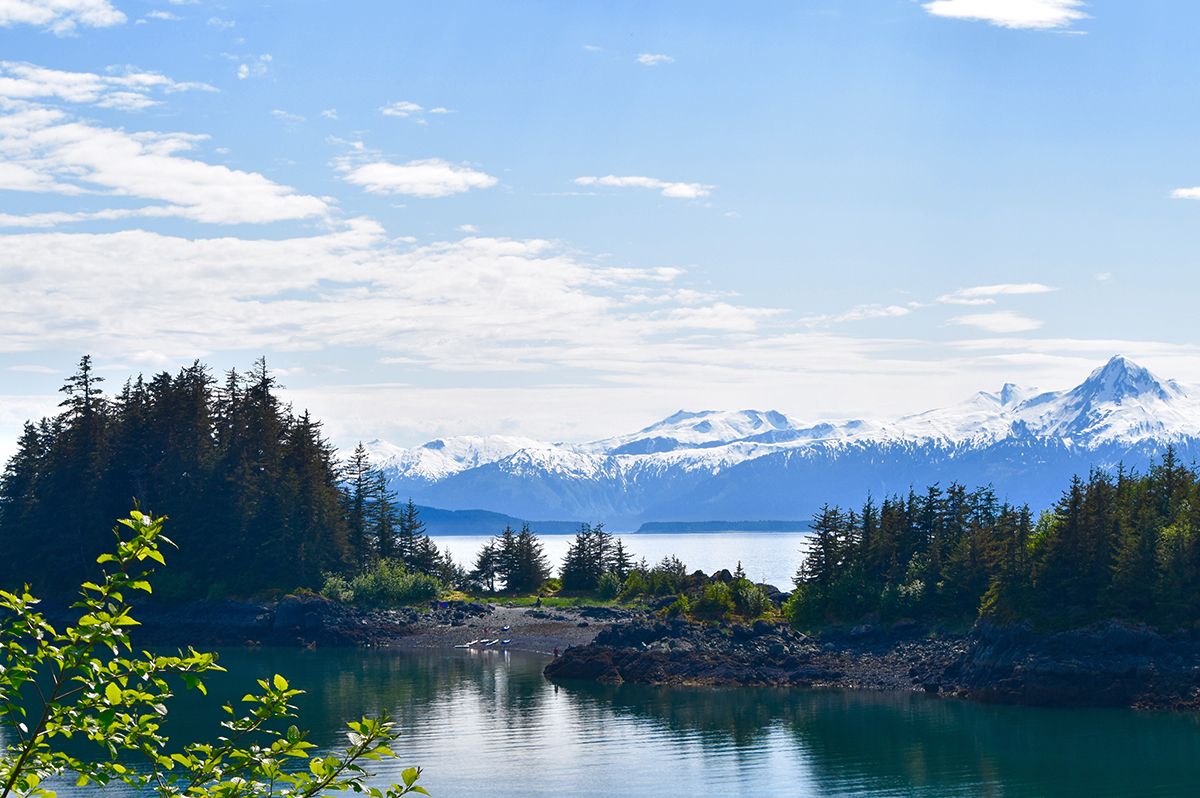
Table of contents
When it comes to the wonders of nature, Alaska is a state filled with many breathtaking Alaskan islands. With its long coastline, numerous inlets, and picturesque views, Alaska’s islands provide a unique and beautiful landscape.
In this article, we’ll explore the various Alaskan islands and their individual characteristics.
How many islands are there in Alaska?
Alaska is home to more than 2,670 islands. Some are large, some small and some just a dot in the ocean. The majority of these islands are located in the Aleutian Islands chain and are part of the municipality of Alaska. There are also many islands that belong to other cities and states. These include Hawaii, which has over 1,500 islands within its borders, as well as the U.S. Virgin Islands and Puerto Rico. Some of the most popular destinations in Alaska island have plenty of beautiful beaches and pristine waters.
Archipelagos in Alaska
Alaska is an incredibly unique state, with a vast array of island archipelagos spread across its spectacular landscape. From the Aleutian Islands in the west to the Alexander Archipelago in the southeast.
Aleutian Islands
- Location –North Pacific Ocean, Bering Sea
- Coordinates –52.2°N 174.2°W
- Total islands –>300
- Major islands –Unimak Island, Unalaska Island, Adak Island
- Area – 6,821 sq mi (17,670 km2)
- Length – 1,200 mi (1900 km)
- Highest elevation –9,373 ft (2856.9 m)
- Highest point –Mount Shishaldin, Unimak Is.
- State –Alaska
- Largest settlement –Unalaska (pop. 4,283)
- Demographics
- Population – 8,162 (2000)
- Pop. density – 0.84/sq mi (0.324/km2)
- Languages – Aleutian
- Ethnic groups –Aleut
- Time zones –Hawaii–Aleutian Time Zone (UTC–10), Alaska Time Zone (UTC–9), Summer (DST); Hawaii–Aleutian Daylight Time (UTC–9); Alaska Daylight Time (UTC–8)
The Aleutian Islands is a remarkable archipelago of over 300 volcanic islands stretching from Alaska’s mainland to the edge of the Bering Sea. Home to a diverse and resilient population, the Aleutian Islands are a unique part of the Alaskan wilderness.
The Aleutian Islands are an integral part of Alaska’s history and culture. Located near the mainland, the islands were first settled by the Unangan, a native people who had been living on the islands for thousands of years. In the early 19th century, Russian fur traders came to the islands and made them part of the Russian Empire. The United States purchased the islands in 1867 and they remain an integral part of Alaska today.
The Aleutian Islands are home to some of the most diverse and spectacular wildlife in Alaska. The Aleutian tern, a federally protected species, nests here, along with bald eagles, sea otters, whales, and brown bears. The area is also home to a variety of fish species, including salmon, halibut, and cod.
The Aleutian Islands are a popular destination for outdoor enthusiasts. Hiking, fishing, kayaking, and bird watching are some of the activities that visitors can enjoy. The islands are also an ideal spot for camping, where you can catch stunning views of incredible landscapes and wildlife.
So, if you’re looking to explore the Aleutian Islands, the first step is to get an Aleutian islands map of the Aleutian islands wilderness.
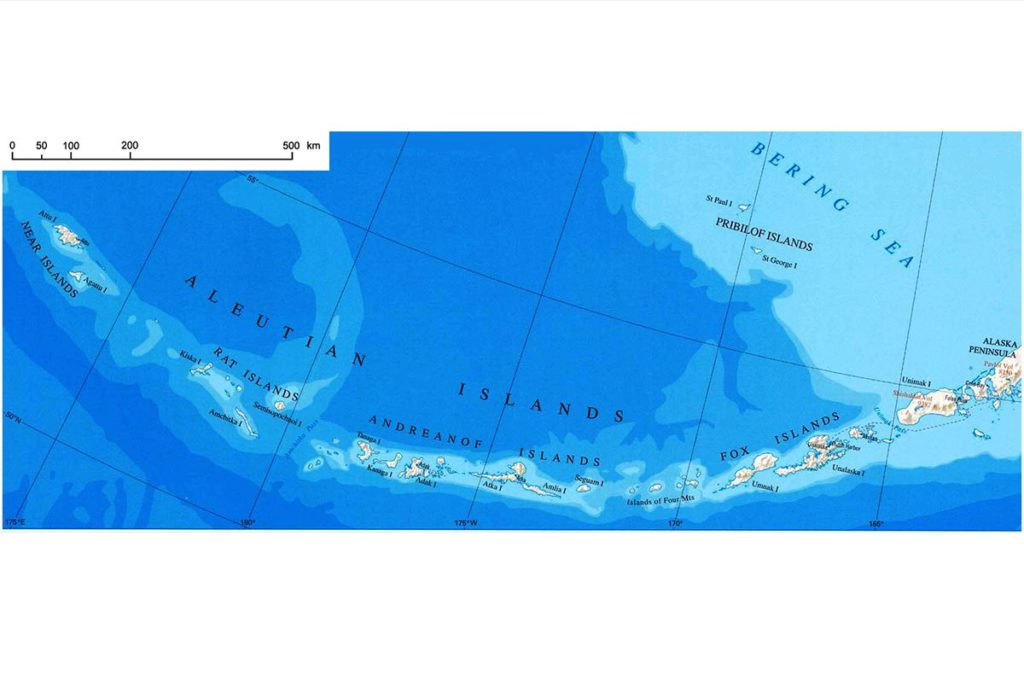
From there, you can plan your trip and decide which of the islands you’d like to explore. From whale-watching to hiking and camping, the Aleutians have something for everyone.
Alexander Archipelago
- Location – Pacific Ocean
- Coordinates –57°N 134°W
- Total islands – 1,100
- Major islands – Prince of Wales Island, Chichagof Island, Admiralty Island, Baranof Island
- Area –13,482 sq mi / 34,919 sq km Area may include lowland areas
- Length –300 mi (480 km)
- Highest elevation –1493 ft (455.07 m)
- Highest point – Baranof Island High Point (5390 ft/1643 m)
- State –Alaska
- Largest settlement –Ketchikan on Revillagigedo Island and Sitka on Baranof Island
- Languages – lingit
- Time zones – Hawaii–Aleutian Time Zone (UTC–10), Alaska Time Zone (UTC–9), Summer (DST); Hawaii–Aleutian Daylight Time (UTC–9); Alaska Daylight Time (UTC–8)
The Alexander Archipelago in Alaska is a unique and remote region. This area is home to a unique subspecies of the wolf, the Alexander Archipelago wolf, and is one of the few places in North America where this species is found.
The Alexander Archipelago wolf
The Alexander Archipelago wolf is a descendant of the grey wolf, but is smaller in size and has shorter legs and ears. The adults are typically between four and five feet long and weigh between 50 to 70 pounds. The species is believed to have evolved in the region over thousands of years in response to the rugged terrain of the islands and a sparse prey base. The Alexander Archipelago wolves are an important part of the ecosystem in this part of Alaska. They help to maintain a healthy balance of prey and predators, and they also keep the population of deer, moose and other ungulates in check. This is important as it helps to ensure the health of the forests and wetlands in the area.
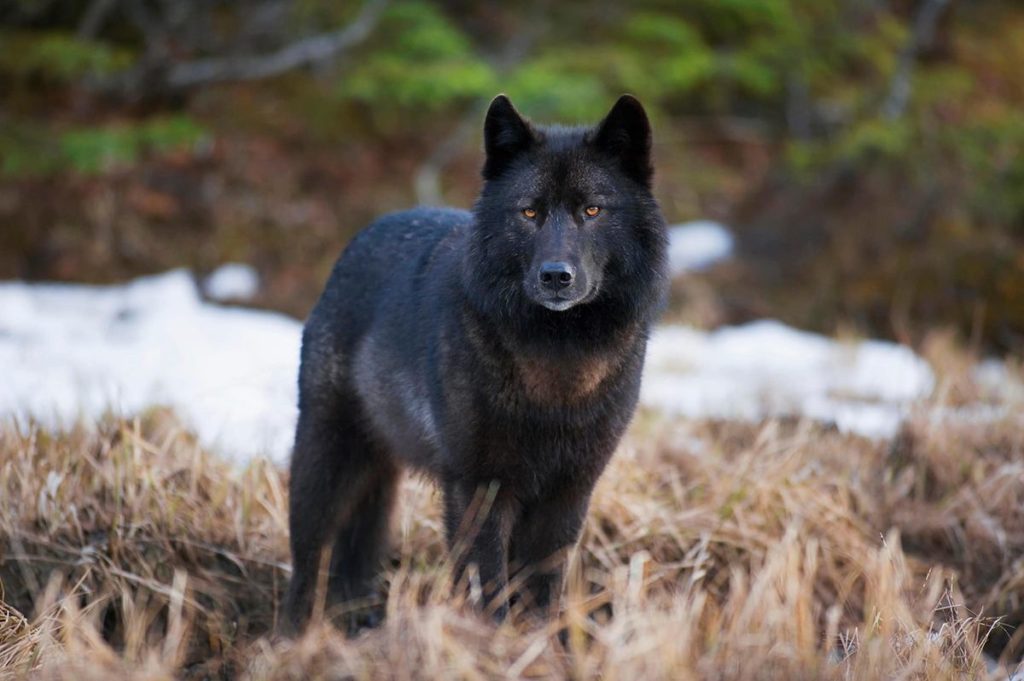
Source; Photo Credit: John Hyde, Alaska; July 25, 2006
Unfortunately, the Alexander Archipelago wolf is also threatened by human activities such as logging, road building and development. As the human population of the region grows, wolves are increasingly at risk of being displaced or killed by humans. In order to protect this unique species and ensure its long-term survival, conservation efforts are needed to protect the Alexander Archipelago wolves and the habitat that they rely on.
Conservation efforts such as habitat protection and restoration, population monitoring and research, and education are all needed to ensure the future of the Alexander Archipelago wolves. By working together to protect this species, we can help to ensure that the Alexander Archipelago wolves will continue to thrive in this unique and remote region of Alaska.
The Andreanof Islands
- Location –between the Pacific Ocean (south) and the Bering Sea (north) and extend east-west for about 270 miles (430 km) east of Rat Islands.
- Coordinates –51 ° 52′ 22″ N, 176 ° 11′ 44″ W
- Total islands –14 large islands, some 55 smaller islands, and innumerable islets
- Area – 1,492 sq mi / 3,863 sq km Area may include lowland areas
- Major islands –Adak, Amlia, Atka, Kanaga, and Tanaga
- Highest elevation –210 ft (64.01 m)
- Highest point – Tanaga Volcano (5925 ft/1806 m)
- State – Alaska
- Largest settlement –Adak
The Andreanof Islands are located in the western Aleutian Islands and include the Andreanof Island group, the Fox Islands, and the western islands of the Near Islands. These islands are home to a variety of bird and mammal species, including eagles, puffins, sea lions, and salmon fishing as well as a number of historic villages. In addition, the Andreanof Islands are a key part of the Aleutian Pribilof Islands Association, a regional organization dedicated to preserving the culture and natural resources of the Aleutian Islands.
The Fox Islands
- Location –300 miles (500 km) southwest of the Alaska Peninsula and are part of the extensive Alaska Maritime National Wildlife Refuge.
- Coordinates – 53° 46′ 59.99″ N, 166° 34′ 59.99″ W.
- Area – 1,781 sq mi / 4,613 sq km Area may include lowland areas
- Major islands –Adugak Island, Breadloaf Island, Fox Islands, Pancake Rock, Samalga Island,
- Highest elevation –1050 ft (320.04 m)
- Highest point –Mount Vsevidof (7051 ft/2149 m)
- State – Alaska
The Fox Islands, located in both Alaska and Maine, are part of the Fox Islands chain that stretches from the Alaska Peninsula to the coast of Maine. The Fox Islands are home to a variety of wildlife species, including bald eagles, harbour seals, and sea otters. The islands offer visitors a wide range of landscapes, from rugged mountain ranges and glaciers to sheltered coves and inlets.
The Walrus Islands
- – Bristol Bay, Alaska
- Coordinates –58°41′16″N 160°08′20″W
- Total islands –7 small craggy islands and their adjacent waters in northern Bristol Bay
- Area – 9,187 acres (3,718 ha)
- Highest elevation – 262 ft (79.86 m)
- State – Alaska
The Walrus Islands, located in the Near Island group, are home to a variety of wildlife species, including walruses, sea lions, seabirds, and harbour seals. The islands are part of the Aleutian Pribilof Islands Association and are designated as a wildlife sanctuary. In addition to offering visitors a unique wildlife viewing experience, the Walrus Islands are also home to various flora and fauna, including wildflowers, mosses, and grasses.
The Pribilof Islands
- Location –in the Bering Sea, about 200 miles (320 km) north of Unalaska and 200 miles (320 km) southwest of Cape Newenham.
- Coordinates –57° 23′ 60″.170° 14′ 48.0012″
- Main islands –Saint Paul and Saint George
- Area – 75.072 sq mi (194.44 km2)
- Highest elevation – 666 ft (203 m) – Saint Paul Island
- State –Alaska
The Pribilof Islands, located in the Bering Sea, are home to a variety of wildlife species, including northern fur seals, sea otters, and seabirds. The islands are also home to various flora and fauna, including wildflowers, mosses, grasses, and shrubs. The islands are part of the Aleutian Pribilof Islands Association and are designated as a wildlife sanctuary.
The Islands of Four Mountains
- Location –in the Bering Sea, about 200 miles (320 km) north of Unalaska and 200 miles (320 km) southwest of Cape Newenham.
- Coordinates –52 ° 52′ 33″ N, 169 ° 47′ 42″ W
- Main islands – Yunaska and Chuginadak
- Area – 210.656 sq mi (545.596 km2)
- Highest elevation – 751 ft (228.9 m)
- State –Alaska
The Islands of Four Mountains, are located in the Alaska Peninsula. The chain includes, from west to east, Amukta, Chagulak, Yunaska, Herbert, Carlisle, Chuginadak, Uliaga, and Kagamil islands. Islands are home to a variety of species, including mountain goats, sea lions, and seabirds. The islands are part of the Aleutian Pribilof Islands Association and are designated as a wildlife sanctuary. In addition to offering visitors a unique wildlife viewing experience, the Islands of Four Mountains also offer a variety of hiking and camping opportunities.
San Juan Islands
- Location –53 miles east of Sitka, in Pybus Bay on the southeast flank of Admiralty Island.
- Coordinates – 57 ° 17′ 14″ N, 134 ° 0′ 18″ W
- Highest elevation – 10 ft (3.05 m)
- State –Alaska
Finally, the San Juan Islands, located in Alaska, are home to a variety of wildlife species, including seals, sea lions, and seabirds. In addition to offering visitors a unique wildlife viewing experience, the San Juan Islands are also home to various flora and fauna, including wildflowers, mosses, and grasses. The islands are part of the Aleutian Pribilof Islands Association and are designated as a wildlife sanctuary.
The biggest Alaskan islands
From the tranquil islands of the Inside Passage to the spectacular scenery of the Aleutians, Alaska’s islands offer something for everyone. Whether you’re looking for a peaceful getaway, an exciting adventure, or a remote retreat, we`ll try to help you find the perfect island.
We offer detailed information about some of the biggest Alaskan islands, including their names, geography, and amenities. Let’s take a look:
Alaskan Islands over 250 square miles (650 km2)
Kodiak Island Alaska
(Area – 3,588sq mi, Area (km2) – 9,293, Kodiak island population (2010) – 13,592)
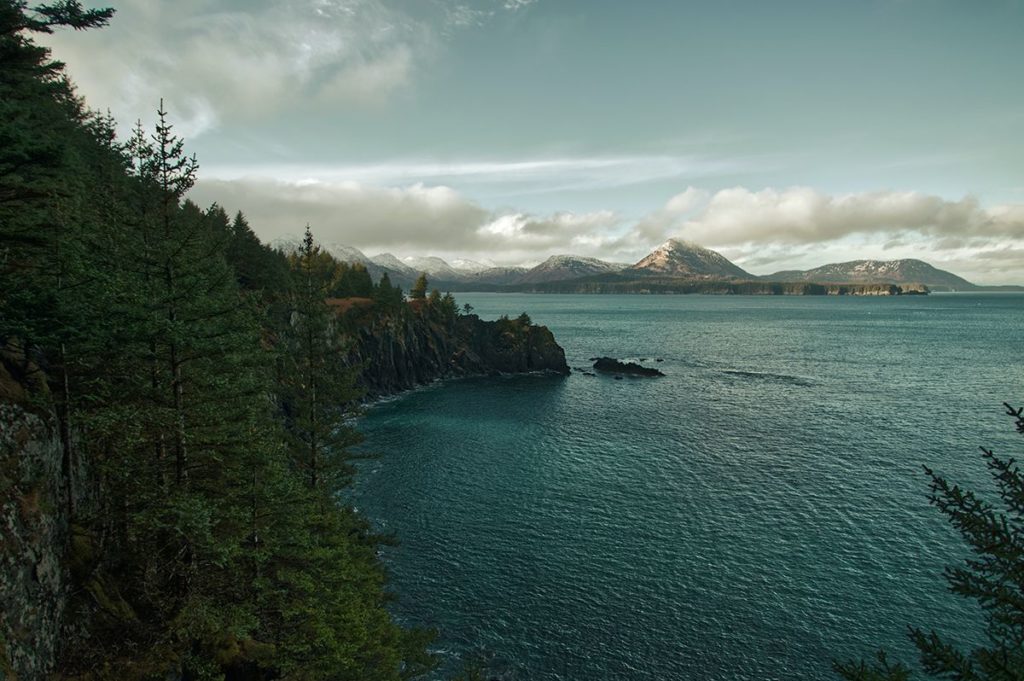
Kodiak Island is one of the most popular Alaskan islands, and it’s easy to see why. This island has stunning landscapes, abundant wildlife, and a variety of activities to enjoy. Kodiak Island is known for its large population of Kodiak island bears, the largest subspecies of brown bears. This remote island is home to some of Alaska’s most breathtaking landscapes, with moss-covered forests and rugged mountains.
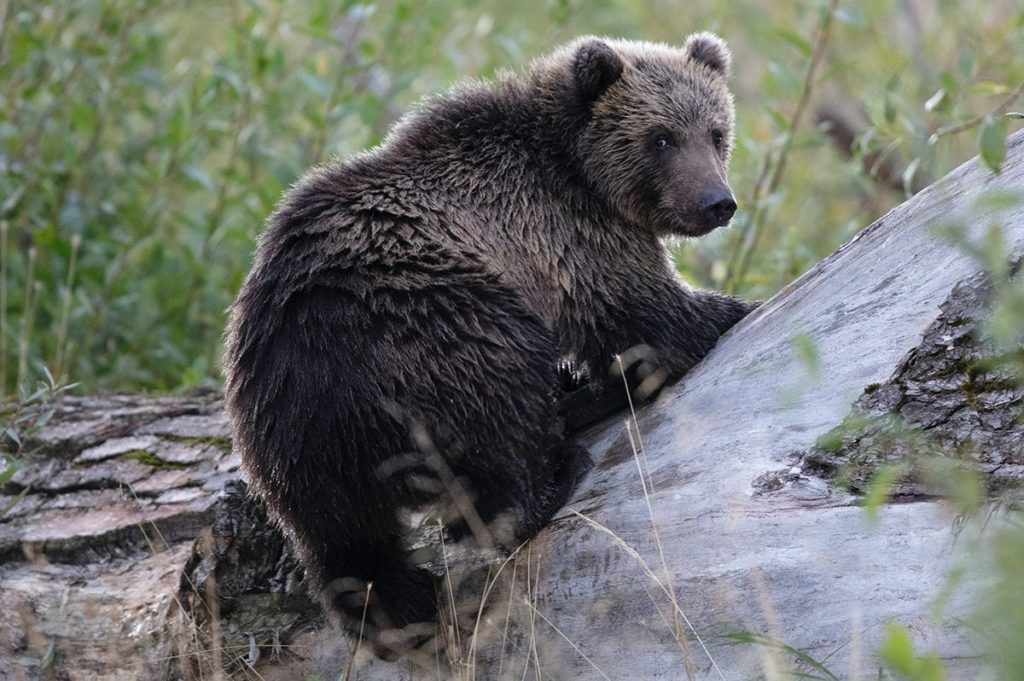
From rugged coastline with dramatic cliffs, pebble beaches and glacial bays, to lush temperate rainforest and rugged mountain peaks, the island offers a variety of attractions for visitors. One of the most popular activities on Kodiak Island is fishing. The island is famous for its world-class salmon and halibut fishing, and visitors can take advantage of the numerous charter fishing companies that offer guided tours.
Visitors can also take advantage of the numerous fishing lodges, resorts and cabins available on the island. Whether you’re looking for an adrenaline-filled adventure or a tranquil hiking trail, Kodiak Island has something for everyone.
Kodiak island map

Prince of Wales Island, Alaska
(Area – 2 577sq mi, Area (km2) – 6,675, Population (2010) – 5 559)
Prince of Wales island is the third largest island in the United States and the second largest island in Alaska. Prince of wales island has plenty of hiking trails, natural hot spring and springs, and plenty of wildlife. It’s especially popular with kayakers who can explore the rugged coastline and spot bears, sea lions, and eagles. The island has unspoiled wilderness, glacier-carved beaches, and plenty of opportunities for wildlife viewing. It’s a great destination for those looking to explore untouched nature. It is also home to the charming towns of Klawock and Craig, which offer a variety of recreational activities and attractions.
Read more in our post: Prince of Wales Island: Your Complete Travel Guide
Chichagof Island
(Area – 2 080sq mi, Area (km2) – 5 388, Population (2010) – 1 342)
Chichagof Island is an Alaskan island in the Alexander Archipelago of the Pacific Ocean. It is part of the Hoonah-Angoon Census Area. Chichagof Island is known for its vast wilderness and incredible wildlife. The island is home to various wildlife, including grizzly bears, bald eagles, sea lions, and humpback whales. Chichagof Island, Alaska is also known for its spectacular scenery, towering mountains, and lush coastal rainforests.
Travellers to Chichagof Island can expect to find some of the most incredible scenery in the world. The island’s rugged landscape is composed of snow-capped peaks, glaciers, coves, and fjords. With its breathtaking views and rugged terrain, it’s easy to see why people flock to Chichagof Island for hiking, kayaking, and sightseeing.
Chichagof Island is the perfect destination for anyone looking for an adventure in Alaska. Chichagof Island With its stunning scenery, rich wildlife, and vibrant culture, Chichagof Island are sure to provide an unforgettable experience. Whether you’re looking for a relaxing holiday or an exciting adventure, Chichagof Island is sure to have something for everyone. So if you’re looking for a unique and wild Alaskan experience, make sure to check out Chichagof Island Alaska.
Saint Lawrence Island Alaska
(Area – 1 983sq mi, Area (km2) – 5 135, Population (2010) – 1 352)
St. Lawrence Island Alaska, also known as Qikiqtaġruk, is an island located in the Bering Sea off the coast of Alaska. The island is home to an indigenous population known as the Yupik Eskimos, who have called this island home for thousands of years. Saint Lawrence Island Alaska is an important part of Alaska’s cultural heritage and offers visitors the chance to explore its unique natural environment, discover its rich cultural history, and experience the traditional Yupik culture. The island is also home to many smaller Alaskan islands, including Walters Island, which is the northernmost point of the Saint Lawrence Island chain.
Island is known for its stunning natural beauty, including rugged snow-covered mountains, wide sandy beaches, and icy bluffs. Visitors can explore the island’s many trails and waterways, including the Kivalina River and the Polar Bear Lake. Wildlife lovers can also enjoy spotting bald eagles, whales, and other marine mammals in the island’s waters.
Admiralty Island
(Area – 1 684sq mi, Area (km2) – 4 362, Population (2010) – 650)
This island is located in the Inside Passage and is home to the largest concentration of bald eagles in the world. Admiralty Island, Alaska is a paradise for outdoor enthusiasts. As the third largest island in the United States, it is part of the Alexander Archipelago in Southeast Alaska and is home to some of the most spectacular sights and experiences available. From stunning wildlife to breathtaking views, there is something for everyone on Admiralty Island.
Adventure seekers will also have plenty to explore on Admiralty Island. The island has everything from sea kayaking to glacier exploring and mountain biking. The island also boasts some of the best freshwater fishing and saltwater fishing opportunities in the world.
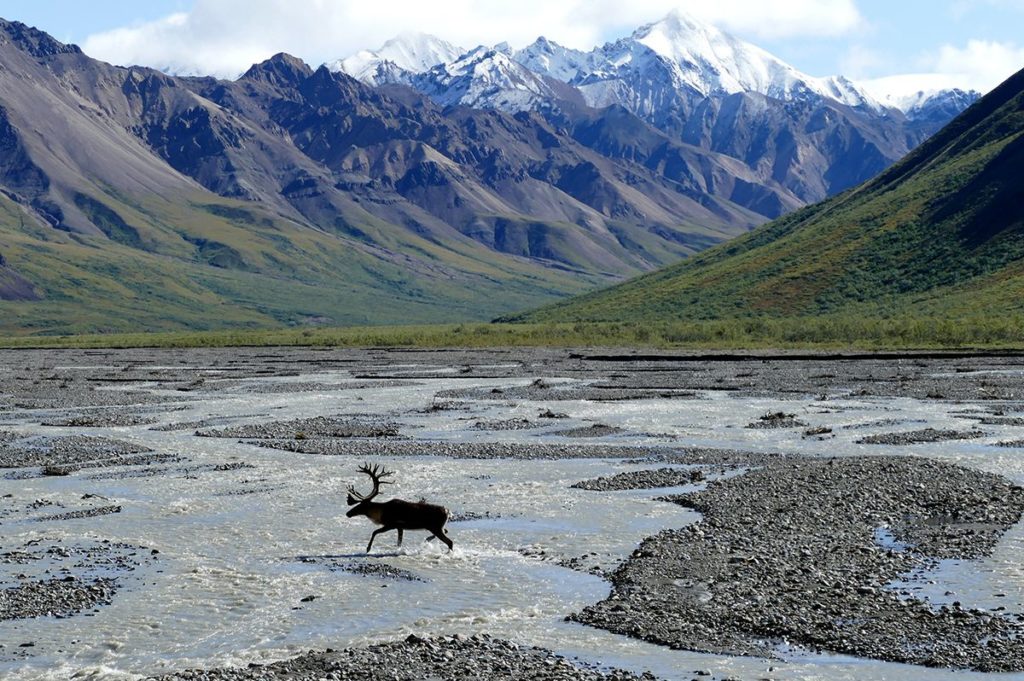
Nunivak Island
(Area – 1 625sq mi, Area (km2) – 4 209, Population (2010) – 191)
The island, located off the coast of Alaska, is a unique place, with a unique culture and history. Nunivak Island is the largest island in the Bering Sea and is entirely owned by the Native Alaskan Nunivami people. The Nunivami culture has deep roots in the area, with archaeological evidence of habitation dating back thousands of years. The island is an important part of the Nunivami’s cultural identity and is a place of great spiritual significance.
Nunivak Island is home to an incredible array of wildlife, including seals, sea lions, walruses, and many species of birds, including puffins and kittiwakes. It also is home to some of the world’s most impressive archaeological finds, with artefacts dating back to the Neolithic era.
The island offers a range of activities, from exploring the rugged coastline to fishing, kayaking, and camping. The island is also home to a variety of local events, such as traditional fish-drying festivals, and whale-hunting ceremonies. Nunivak Island is truly a hidden gem, and a place of great natural beauty and spiritual significance. Whether you’re looking for a unique cultural experience, or just a chance to get away from it all, Nunivak Island is the perfect spot for a memorable vacation.
Unimak Island
(Area – 1 590sq mi, Area (km2) – 4 119, Population (2010) – 35)
The island is located in the Aleutian Islands Chain of Alaska. It`s the largest island of the Aleutian Islands of Alaska and is the easternmost island in the United States. Unimak Island is known for its spectacular beauty and remote location. The island is home to numerous wildlife species, including polar bears, sea otters, sea lions, grey whales, orcas, and sea birds.
Along the shoreline of the island, visitors can spot harbour seals, steller sea lions,, and sea otters. The island also has a large population of bald eagles. It have been designated as a National Wildlife Refuge since 1980. The refuge provides habitat for endangered species such land mammals such as the Steller sea lion, spectacled eider, and Aleutian Canada goose. The island also provides nesting and breeding habitat for seabirds, including the tufted puffin, common murre, and crested auklet.
The island is home to the Akutan Volcano, one of the most active volcanoes in the United States. The volcano has erupted several times over the last century, most recently in 1992 and 1998. The volcano is considered to be an active volcano and could be a potential source of danger for the island’s inhabitants. The island is a popular destination for those looking for a remote getaway. Visitors to the island can experience a wide array of activities, including wilderness adventure trips, bird watching, and wildlife viewing. The island is accessible by plane, boat, or ferry and has several lodges and campgrounds located on the island. Whether you’re looking for a remote getaway or an adventure-filled vacation, this Island has something to offer everyone.
Baranof Island
(Area – 1 570sq mi, Area (km2) – 4,065, Population (2010) – 8 532)
Baranof Island is an island located in the Alexander Archipelago of Alaska, USA. It is surrounded by the waters of the Inside Passage and is the largest island in the archipelago. Baranof Island has an extensive history of fishing, logging, and mining. It is home to the Tlingit, Haida, and Tsimshian peoples, who are Native Alaskan tribes.
The island was explored by the Russians in 1741, who named it Baranof Island after the governor of Russian Alaska, Alexander Baranov. Today, Baranof Island is a popular tourist destination. Visitors can enjoy many activities, such as whale watching, kayaking, fishing, and hiking. Visitors can also take part in many cultural events, such as the annual Tlingit Festival, or attend a traditional potlatch ceremony.
Baranof Island is home to some of Alaska’s most stunning wildlife and scenery. There are dozens of species of wildlife to observe, including bald eagles, humpback whales, and black bears. There are also many incredible glaciers, mountains and valleys to explore, which makes Baranof Island, Alaska the perfect destination for outdoor enthusiasts. Baranof Island is the perfect destination for travellers looking to get away from it all and experience the beauty and culture of Alaska. From the stunning scenery to the vibrant culture, Baranof Island offers something for everyone. With its remote location and abundance of outdoor activities, Baranof Island is a great destination for those looking to explore the wilds of Alaska.
Revillagigedo Island
(Area – 1 145sq mi, Area (km2) – 2,965, Population (2010) – 13 477)
This spectacular and secluded island lies in the Gulf of Alaska and is part of the Aleutian Islands chain. Revillagigedo Island is home to a wide variety of wildlife, including puffins, bald eagles, sea lions, and even orcas. It’s also a great place for outdoor adventurers, with its rugged and remote terrain offering a variety of activities. The island earned its name due to its volcanic nature. Revillagigedo Island is part of the Revillagigedo Volcanic Arc, and its seven volcanoes are responsible for the island’s unique landscape. It’s also home to the largest rookery of tufted puffins in the world. These birds nest in the cliffs and rocky areas of the island each summer, providing a fascinating sight for visitors.
Revillagigedo Island, Alaska’s remote location and wild beauty make it a great place to explore. It’s a popular spot for whale watching and fishing, as well as for kayaking, camping, and hiking. There are also plenty of places to relax and enjoy the scenery, with quiet coves and beaches. The island is also home to a variety of wildlife, like harbour seals, sea otters, and sea lions. It’s also a key part of the Gulf of Alaska’s coastal ecosystem, providing essential habitat for many of the area’s fish and wildlife species. Revillagigedo Island is a stunning destination that is perfect for exploring and enjoying nature. With its remote location, stunning scenery and wildlife, and wide range of activities, it’s a great place to experience the beauty of Alaska.
Kupreanof Island
(Area – 1 086sq mi, Area (km2) – 2,813, Population (2010) – 584)
Kupreanof Island is a large, remote island in the Alexander Archipelago of Alaska. Located in the northern panhandle of the state, Kupreanof Island is one of the largest in the Alexander Archipelago and is part of the larger Alaska Marine Highway System. Kupreanof Island is known for its stunning views, remote ruggedness, and abundant wildlife. The island is home to various wildlife including bald eagles, black bears, deer, and sea otters. It also features a variety of coastal wetlands, estuaries, and temperate rainforests.
Kupreanof Island offers a wide range of activities for visitors of all ages and interests. From hiking, kayaking, and boating, to fishing, birding, and wildlife watching, the island offers a wide array of outdoor pursuits. There are also numerous cultural, historical, and natural sites to explore on the island, such as the Kupreanof Island Museum and the historic Wrangell-St. Elias National Park.
Kupreanof Island is also known for its spectacular winter activities. With its close proximity to the Alexander Archipelago, Kupreanof Island is a great destination for snowshoeing, cross-country skiing, and snowmobiling. Kupreanof Island is an unforgettable destination for nature lovers, outdoor enthusiasts, and those looking for a unique and unforgettable Alaskan experience. With its breathtaking views, abundant wildlife, and wide range of activities.
Unalaska Island
(Area – 1 051sq mi, Area (km2) – 2 722, Population (2010) – 1 759)
The island is in the Aleutian Chain of the U.S. state of Alaska, located in the northernmost tip of the chain. This island is the largest in the Aleutian Chain and is a remote, rugged and wild destination. Unalaska Island is a breathtaking and wild landscape.
The island is filled with dramatic coastal cliffs, deep fjords and bays, and volcanic peaks. It is a wild and remote island, with some of the most spectacular scenery in Alaska. The island is an important habitat for the many species of wildlife that live in the Aleutian Chain. The island is home to a variety of birds, including puffins, murrelets, and kittiwakes. It also provides a habitat for sea otters, harbour seals, and humpback whales.
Unalaska Island is also home to the fishing town of Unalaska, Alaska. It is one of the oldest communities in the state and is known for its vibrant culture and local cuisine. The town is home to a variety of seafood restaurants and shops, where visitors can sample the local delicacies. Unalaska Island is a great destination for those seeking a remote and wild experience. Visitors can explore its rugged coastline, take part in its vibrant culture, and enjoy its many outdoor activities. Whether you are looking for a remote getaway or an exciting adventure, Unalaska Island is an ideal location to explore.
Nelson Island, Alaska
(Area – 843sq mi, Area (km2) – 2 183, Population (2010) – 1 197)
Nelson Island is an island located in Alaska’s Prince William Sound, off the coast of the Kenai Peninsula. The island is home to various wildlife, including whales, sea otters, harbour seals, and sea lions. There are also numerous bird species living on the island, including bald eagles, peregrine falcons, and many shorebirds.
Nelson Island is a popular destination for outdoor enthusiasts. Hiking, kayaking, and fishing are all popular activities to enjoy on the island. There are also a number of cabins available for rent on the island, offering visitors a chance to stay in the wilderness and enjoy the serenity of the area.
The island boasts a number of scenic views, from coastal cliffs to snow-capped mountains. There are also a number of beaches to explore and enjoy. The island is accessible by boat or plane, and there are several charter services available to take visitors to the island. Nelson Island is an excellent destination for those looking to escape the hustle and bustle of city life. With its stunning scenery and abundance of wildlife, it’s the perfect place to relax and enjoy the beauty of the Alaskan wilderness. Whether you’re looking for an adventure or just some peace and quiet, Nelson Island Alaska is the ideal destination.
Kuiu Island
(Area – 758sq mi, Area (km2) – 1,962, Population (2010) – 10)
Kuiu Island, located in Prince William Sound, Alaska, is a picturesque paradise of natural beauty. The island is home to some of the most spectacular scenery in the world, including its many snow-capped mountains, lush forests, and pristine waters. Kuiu Island, also known as Kuiuak Island, is a remote, wild, and rugged island in Alaska’s Prince William Sound. It is the largest of the Alaskan Islands of the Four Mountains, and it is characterised by its mountain peaks, glaciers, and some of the most stunning wildlife in the world. For over 30 years, the island has been home to a variety of wildlife and recreational activities. The island’s rivers and streams are teeming with salmon, trout, and other fish species. Its forests provide habitats for many species of animals, including bald eagles, brown bears, black bears, moose, and wolves. If you are looking for a truly unique and unforgettable experience,
Kuiu Island is the perfect destination. Its natural beauty and untouched nature make it a perfect place for adventure seekers. Whether you want to explore the island’s rugged landscapes, relax on a beach, or search for wildlife, Kuiu Island has something for everyone. If you are looking to take a break from the hustle and bustle of city life and enjoy the peacefulness of nature, Kuiu Island is the ideal destination. With its breathtaking scenery and stunning wildlife, Kuiu Island will definitely provide you with a unique and unforgettable experience.
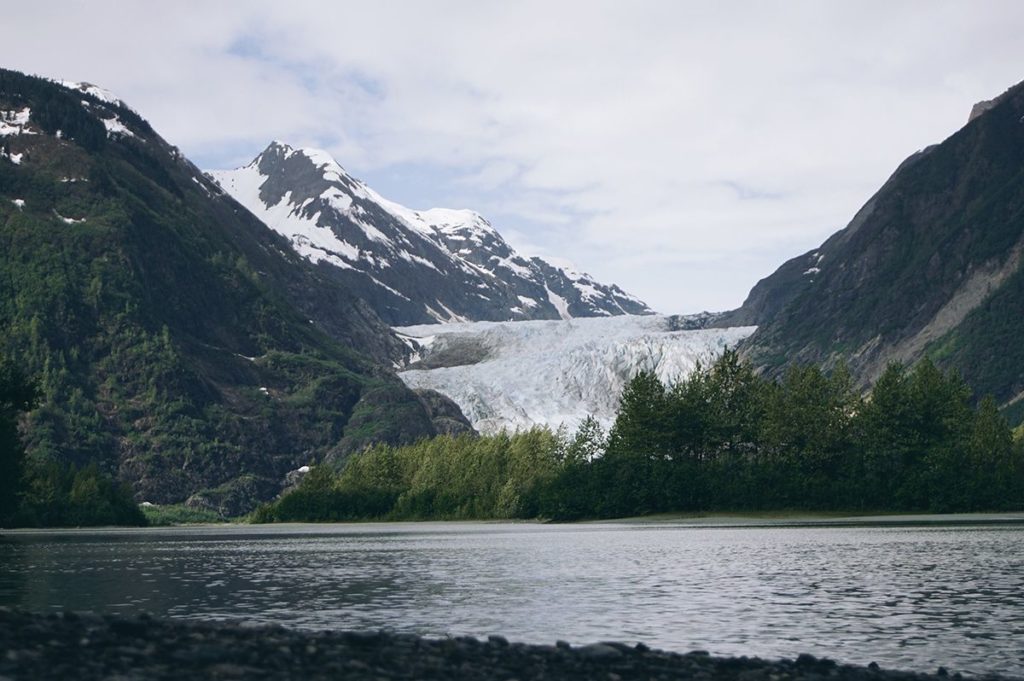
Afognak Island
(Area – 698sq mi, Area (km2) – 1 809, Population (2010) – 169)
Afognak Island, Alaska is an island located off the southern coast of Alaska in the Kodiak Archipelago. It is part of the Kodiak Island Borough and is the second largest island in the archipelago after Kodiak Island.
The island is a part of the Alaska Marine Highway System, which means it can be reached by ferry and water taxis. It is home to a variety of wildlife, including brown Afognak island bears, sea otters, humpback whales, sea lions, bald eagles, and numerous species of fish. There are also a variety of hiking and sightseeing opportunities, including a hike to the highest peak on the island, Afognak Peak. The island is also home to several communities, with the largest one being Port Lions.
This village has a population of around 700 people and is the centre of activity for the majority of the island’s activities. There are also several small communities located throughout the island, offering a unique cultural experience. The island is known for its incredible scenery, as well as its rich natural resources. In addition to the abundance of wildlife, there are also numerous streams, lakes, and rivers located throughout the island, making it a great spot for fishing and camping. In the summer, visitors can enjoy several activities, including kayaking, canoeing, and even surfing.
Afognak Island is a great destination for anyone looking to experience the beauty of Alaska while staying close to civilization. With its numerous outdoor activities and wildlife, it is an ideal vacation spot for families and outdoor enthusiasts alike. Whether you are looking for a peaceful vacation or a more active adventure, Afognak Island, Alaska has something for everyone.
Umnak Island
(Area – 692sq mi, Area (km2) – 1 793, Population (2010) – 39)
Umnak Island, located in Alaska’s Aleutian Islands, is a wild and beautiful place filled with towering mountains, picturesque volcanoes, and rugged shorelines. With its remote location and unique environment.
It`s the second-largest and most populated island of in the Aleutian chain and is situated between the main islands of Unalaska and Unimak. It is a place of unparalleled natural beauty, with sweeping views of the Pacific Ocean, the surrounding islands, and the majestic volcanoes that tower over the landscape.
The island is a haven for outdoor enthusiasts, offering hiking, fishing, bird watching, kayaking and more. With its abundant wildlife and lush vegetation, Umnak is an ideal destination for anyone seeking an adventure in the great outdoors.
The island is home to several unique attractions, including the famous “White Beach” and the Umnak Volcano, both of which are easily accessible by boat. On the east side of the island, the Umnak Lighthouse stands guard over the entrance to the Bering Sea.
Atka Island
(Area – 410sq mi, Area (km2) – 1 061, Population (2010) – 61)
Atka Island is an Alaskan island located in the central Aleutian chain of islands by Alaska. The island is part of the Alaska Maritime National Wildlife Refuge and is home to a variety animal species of wildlife, including seabirds, sea otters, and sea lions.
Atka Island is also a popular tourist destination, due to its breathtaking scenery and abundant wildlife. Visitors to the island can explore the many trails, go on a whale-watching tour, or visit the local cultural sites. The island is also home to some of the best fishing in the Aleutians, and visitors can take advantage of the excellent salmon and halibut fishing opportunities. For those looking for an adventure, the island also offers excellent camping and kayaking opportunities. In the summer, visitors can expect to find large colonies of seabirds, sea lions, and sea otters. In the winter months, visitors can enjoy spectacular views of the Northern Lights.
Atka Alaska is a great destination for visitors looking to experience the beauty of Alaska’s wild beauty and traditional Aleut culture.
Attu Island
(Area – 346sq mi, Area (km2) – 896, Population (2010) – 0)
Attu Island, located in the western Aleutians in Alaska, US, is one of the most remote and least visited islands in the world. Attu Island is known for its unique and rugged landscape, which includes the highest peak in the Aleutian Islands. The island is also a favourite destination for bird watching, thanks to its large population of seabirds.
Attu Island is the westernmost and largest of the Aleutian Islands and was the site of the only World War II battle fought on American soil. During the Battle of Attu, which lasted from May 11 to May 30, 1943, Japanese forces occupied the island in an attempt to divert American forces away from their plans to invade the Japanese mainland. The battle ended with the surrender of the Japanese forces and the island was retaken by the US.
Today, Attu Island is a wildlife sanctuary and is open to the public for bird watching, camping and fishing. Visitors can also take advantage of the island’s unique landscape which includes the highest peak in the Aleutian Islands in Alaska, Mount Kiska, and its wild coastline. The Island of Attu is accessible by a single boat service from Adak Island Alaska and is a popular destination for bird watchers and nature lovers. The island is also known for its unique species of birds, such as the rare Aleutian Curlew and the Tufted Puffin. Whether you’re looking to experience the rugged beauty of Attu Island or to explore the wildlife, Attu Island is an ideal destination for those looking for an adventure off the beaten path.
Etolin Island
(Area – 336sq mi, Area (km2) – 870, Population (2010) – 15)
Etolin Island is a large island located off the coast of Alaska in the Alexander Archipelago of the Pacific Ocean. It is located near the northern tip of Alaska’s mainland and is part of the Tongass National Forest.
This Alaska island is home to a diverse array of wildlife including brown bears, wolves, mountain goats, bald eagles, and sea otters. The island is also home to a variety of bird species, including Pacific loons and red-necked phalaropes. It is also the site of numerous archaeological sites, such as ancient Eskimo mounds and petroglyphs.
Etolin Island is a popular destination for visitors to Alaska due to its beauty and unique wildlife. The island is known for its rugged shoreline, bays, and forests. Visitors can explore the island from the comfort of their own boat or take a guided tour.
Montague Island
(Area -305sq mi, Area (km2) – 790, Population (2010) – 0)
Montague Island, Alaska is a remote paradise in the Gulf of Alaska that is known for its incredible wildlife, pristine wilderness and stunning views. Located just off the coast of Kodiak Island, Montague Island is a remote and largely unspoiled habitat that is home to a wide variety of species, including sea otters, harbour seals and bald eagles. The island is named after Captain George Vancouver who explored the area in 1794. With its rugged, remote terrain and its collection of unique flora and fauna, it is a haven for wildlife and adventure. It is also the only designated wilderness area in the Gulf of Alaska. Montague Island is a fantastic destination for wildlife viewing.
The island’s rugged coastline and rock outcroppings are a perfect habitat for sea otters, harbour seals and bald eagles. It is also home to several unique species of birds, including puffins, gulls, and various species of grebes. In addition, the island is a great spot for whale watching, with orcas, humpback, and grey whales often seen in the waters surrounding the island. The island’s remote location makes it a great spot for those looking for a peaceful, undisturbed place to explore. Montague Island Alaska is accessible by boat and offers a variety of activities, from fishing and kayaking to camping and picnicking.
Adak Island
(Area – 280sq mi, Area (km2) – 725, Population (2010) – 326)
Adak Island is situated in the Aleutian Islands of Alaska and is the southernmost island in the chain. It is home to the city of Adak, the only city in the entire Aleutians West Census Area. Adak Island has a unique history and geography and has been a major hub for trade, fishing, and military activities. The island was first settled by native Aleuts, who lived off the land and sea. The island was then colonized by the Russians in 1786, who used it as a base of operations for the fur trade. From the early 19th century until World War II, Alaska Adak Island served as an important stopover and fueling station for international shipping.
The topography of Adak Island, Alaska is largely composed of rolling hills and mountains, as well as numerous bays and inlets. The highest peak, Mt. Moffett, stands at 8,050 feet above sea level. The island also has many freshwater lakes, rivers, and streams, making it a great spot for fishing, kayaking, and other water activities. Due to its strategic location in the Aleutians, Adak Island was heavily used during World War II, with the US Navy establishing a major base there. After the war, the island was slowly abandoned, though the old military installations, such as Fort Schwatka, remain as a reminder of the island’s past.
Today, Adak Island, Alaska is home to a small, vibrant community, with a population of about 2,500. Alaska Adak Island is an amazing destination for outdoor enthusiasts, offering countless opportunities for exploration, adventure, and relaxation. Whether you’re looking for great fishing and hiking, or just a peaceful retreat, Adak Island is the perfect destination. So if you’re looking for a unique and beautiful destination, Adak Island in Alaska is a perfect choice.
Dall Island
(Area – 253sq mi, Area (km2) – 655, Population (2010) – 20)
Dall Island, Alaska is a stunningly beautiful island located in the Alexander Archipelago of Alaska. Forming part of the larger Prince of Wales Island, Dall Island is in the Alaskan panhandle and is only accessible by boat or a float plane.
This Alaska island is known for its diverse wildlife and natural beauty. It is home to various animals, including grizzly bears, bald eagles, sea lions, sea otters, and humpback whales. The island is also a popular destination for hikers and campers due to its breathtaking views and rugged terrain. Dall Island is also known for its rich culture and history.
The island was originally inhabited by the Tlingit people, an indigenous group who have resided in the area for thousands of years. Visitors to the island can explore the ruins of ancient villages, as well as the stories of the Tlingit people passed down through generations. Dall Island is a popular destination for fishing and hunting.
The island’s surrounding waters are filled with salmon, halibut, and other fish, while the island’s forests are home to black bears, Sitka deer, and other game. The island is also a great place to spend time outdoors. It has a number of scenic parks and trails, as well as beautiful beaches and lakes for swimming and other recreational activities. In addition, the island has many small villages that offer unique shopping opportunities and delicious local cuisine.
Islands in Alaska with 75–250 square miles (194–647 km2)
- Wrangell Island – (Area – 216sq mi, Area (km2) – 560, Population (2000) – 2 401)
- Mitkof Island – (Area – 211sq mi, Area (km2) – 546, Population (2000) – 3 364)
- Tanaga Island – (Area – 204sq mi, Area (km2) – 529, Population (2000) – 0)
- Zarembo Island – (Area – 185sq mi, Area (km2) – 478, Population (2000) – 0)
- Unga Island – (Area – 177sq mi, Area (km2) – 461, Population (2000) – 0)
- Amlia – (Area – 176sq mi, Area (km2) – 459, Population (2000) – 0)
- Hinchinbrook Island, Alaska – (Area – 170sq mi, Area (km2) – 445, Population (2000) – 5)
- Kosciusko Island – (Area – 169sq mi, Area (km2) – 438, Population (2000) – 52)
- Kruzof Island – (Area – 168sq mi, Area (km2) – 435, Population (2000) – 0)
- Kanaga Island – (Area – 142sq mi, Area (km2) – 369, Population (2000) – 0)
- St. Matthew Island – (Area – 137sq mi, Area (km2) – 354, Population (2000) – 0)
- Annette Island Alaska – (Area – 132sq mi, Area (km2) – 342, Population (2000) – 1 447)
- Akutan Island – (Area – 129q mi, Area (km2) – 334, Population (2000) – 713)
- Hagemeister Island – (Area – 120sq mi, Area (km2) – 312, Population (2000) – 0)
- Nagai Island – (Area – 120sq mi, Area (km2) – 310, Population (2000) – 0)
- Amchitka – (Area – 119sq mi, Area (km2) – 309, Population (2000) – 0)
- Sitkalidak Island – (Area – 119sq mi, Area (km2) – 309, Population (2000) – 0)
- Kiska – (Area – 107sq mi, Area (km2) – 278, Population (2000) – 0)
- Knight Island – (Area – 101sq mi, Area (km2) – 260, Population (2000) – 0)
- Gravina Island – (Area – 83sq mi, Area (km2) – 215, Population (2000) – 1)
- Agattu – (Area – 82sq mi, Area (km2) – 212, Population (2000) – 0)
- Semisopochnoi Island – (Area – 86sq mi, Area (km2) – 224, Population (2000) – 0)
- Seguam Island – (Area – 83sq mi, Area (km2) – 215, Population (2000) – 1)
- Yakobi Island – (Area – 82sq mi, Area (km2) – 212, Population (2000) – 0)
- Raspberry Island, Alaska – (Area – 77sq mi, Area (km2) – 200, Population (2000) – 2)
- Douglas Island – (Area – 77sq mi, Area (km2) – 199, Population (2000) – 5 297)
Islands in Alaska with 5–75 square miles (13–194 km2)
- Heceta Island – (Area – 70sq mi, Area (km2) – 181, Population (2000) – 14)
- Tugidak Island – (Area – 69sq mi, Area (km2) – 180, Population (2000) – 0)
- Hawkins Island – (Area – 67sq mi, Area (km2) – 175, Population (2000) – 4)
- Yunaska Island – (Area – 67sq mi, Area (km2) – 172, Population (2000) – 0)
- Sitkinak Island – (Area – 65sq mi, Area (km2) – 169, Population (2000) – 0)
- Akun Island – (Area – 65sq mi, Area (km2) – 168, Population (2000) – 0)
- Shuyak Island – (Area – 65sq mi, Area (km2) – 168, Population (2000) – 0)
- Chuginadak Island – (Area – 65sq mi, Area (km2) – 167, Population (2000) – 0)
- Sukkwan Island – (Area – 65sq mi, Area (km2) – 167, Population (2000) – 0)
- Great Sitkin Island – (Area – 65sq mi, Area (km2) – 167, Population (2000) – 0)
- Deer Island – (Area – 58sq mi, Area (km2) – 152, Population (2000) – 0)
- Duke Island – (Area – 57sq mi, Area (km2) – 149, Population (2000) – 0)
- Uganik Island – (Area – 57sq mi, Area (km2) – 147, Population (2000) – 0)
- St. Michael Island – (Area – 56sq mi, Area (km2) – 145, Population (2000) – 915)
- Stuart Island – (Area – 56sq mi, Area (km2) – 145, Population (2000) – 0)
- Suemez Island – (Area – 52sq mi, Area (km2) – 135, Population (2000) – 0)
- Esther Island – (Area – 52sq mi, Area (km2) -133, Population (2000) – 31)
- Sanak Island – (Area – 50sq mi, Area (km2) – 128, Population (2000) – 0)
- Kagalaska Island – (Area – 45sq mi, Area (km2) – 116, Population (2000) – 0)
- Long Island – (Area – 45sq mi, Area (km2) – 115, Population (2000) – 0)
- Chirikof Island – (Area – 44sq mi, Area (km2) – 116, Population (2000) – 0)
- Dolgoi island – (Area – 41sq mi, Area (km2) – 107, Population (2000) – 0)
- Baker Island – (Area – 41sq mi, Area (km2) – 105, Population (2000) – 0)
- Saint Paul Island – (Area – 40sq mi, Area (km2) – 104, Population (2000) – 532)
- Sedanka Island – (Area – 40sq mi, Area (km2) – 103, Population (2000) – 0)
- Tigalda Island – (Area – 35sq mi, Area (km2) – 91, Population (2000) – 0)
- Saint George Island – (Area – 35sq mi, Area (km2) – 90, Population (2000) – 0)
- Catherine Island – (Area – 34sq mi, Area (km2) – 87, Population (2000) – 0)
- Coronation Island – (Area – 30sq mi, Area (km2) – 78, Population (2000) – 0)
- Gareloi Island – (Area – 26sq mi, Area (km2) – 67, Population (2000) – 0)
- Woronkofski Island – (Area – 23sq mi, Area (km2) – 59, Population (2000) – 0)
- Tuxekan Island – (Area – 20sq mi, Area (km2) – 53, Population (2000) – 0)
- Shemya Island Alaska – (Area – 5,9 sq mi, Area (km2) – 15,3, Population (2000) – 0)
Full list of Alaskan islands you`ll find by the link
Alaska islands for sale
Gorgeous Alaskan islands for sale are a dream come true for many who have dreamed of owning their own private piece of paradise. Whether you are looking for a quiet getaway, a fishing and hunting retreat, or simply a place to relax and enjoy life, Alaskan islands for sale offer something for everyone.
From the famous “Aleutian Chain” of islands to the remote and rugged islands of the Bering Sea, the islands of Alaska offer a variety of settings for the perfect escape. With untouched wilderness, beautiful views, and abundant wildlife, these islands are sure to provide an unforgettable experience. Here is the list of available Alaskan islands for sale:
- Alexander Lake Lodge ( Size – 49.4 acres, Location – West of Anchorage; Country/State – Alaska; Region – USA).
- Twin Islands ( Size – 0.58 acres; Location – Sitka; Country/State – Alaska; Region – USA ).
- Big Gull Island ( Size – 11.58 acres; Location – Sitka; Country/State – Alaska; Region – USA).
- Mertz Island (Size – 3.75 acres; Location – Sitka; Country/State – Alaska; Region – USA).
- Spuhn Island Lots (Size – 2.00 acres; Location – Juneau; Country/State – Alaska; Region – USA; Development – Non Developed; Price – $ 169,900 USD).
- Chatham, Sitkoh Bay (Size – 30.22 acres; Location – Chichagof Island, Alaska 40 miles northeast of Sitka; Development – Developed; Price – $ 2,200,000 USD).
No matter what your interests are, Alaska Island for sale offers something for everyone. From the untouched wilderness to the beautiful views, these islands provide the perfect escape. With its abundance of wildlife, secluded beaches, and unspoiled beauty, these islands are a great investment for anyone looking for a perfect getaway.
Read also: Greenland island as the biggest island in the world
